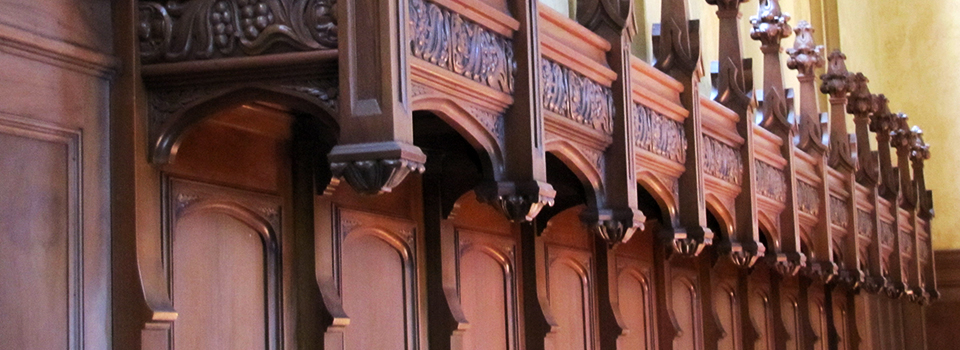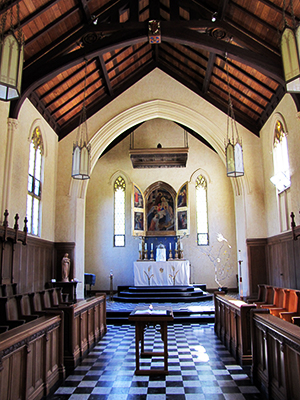
Santa Sabina, built in 1939 as a house of spiritual formation for the women preparing to join the community of the Dominican Sisters of San Rafael, served the Sisters' needs for training new members until 1970. Its Dominican design and Tudor-Gothic architecture were inspired by Mother Raymond O'Connor's visit to the Dominican Monastery at Stoke-on-Trent in England.
Upon her return to San Rafael, Mother Raymond entrusted to the renowned architect, Arthur Constable, the work of designing the novitiate building. It is named after Santa Sabina in Rome which is Center of the Dominican Order whose monastic house is joined to the ancient Church of Santa Sabina on the Aventine Hill. In the 1960s a wing was added to the building to provide additional bedroom space on the second floor and a large recreation/meeting area on the first floor.
Since 1970, when the Center opened its doors to spiritual seekers of all traditions, Santa Sabina honors its history and heritage. Its contemplative roots permeate this sacred space and the present retreat and conference ministry herein. Staff continue to cultivate the Center as a place of study, prayer and community as they extend the ministry of the Dominican Sisters of San Rafael in support of contemplative spiritual exploration.
The Center fulfills this mission by:
-
Providing a staff dedicated to nourishing and implementing the mission of the Center;
-
Sustaining an environment that nurtures a contemplative way of being;
-
Providing Center programs that incorporate the mission of the Center, with focus on the Earth, the Arts, and the contemplative dimension of our spiritual heritage;
-
Providing hospitality respectful of the spiritual and cultural traditions of those hosted groups that come to the Center for their own programs.
-
Maintaining a food service that provides healthy, carefully prepared meals, responsive to the needs of individuals and groups;
-
Giving careful attention to maintaining the beauty of the grounds and garden areas within and surrounding the Center;
-
Maintaining a commitment to the careful upkeep and financial viability of Santa Sabina Center as a unique sanctuary in Marin County where people of all spiritual beliefs and cultural backgrounds can find sacred space and contemplative quiet.
